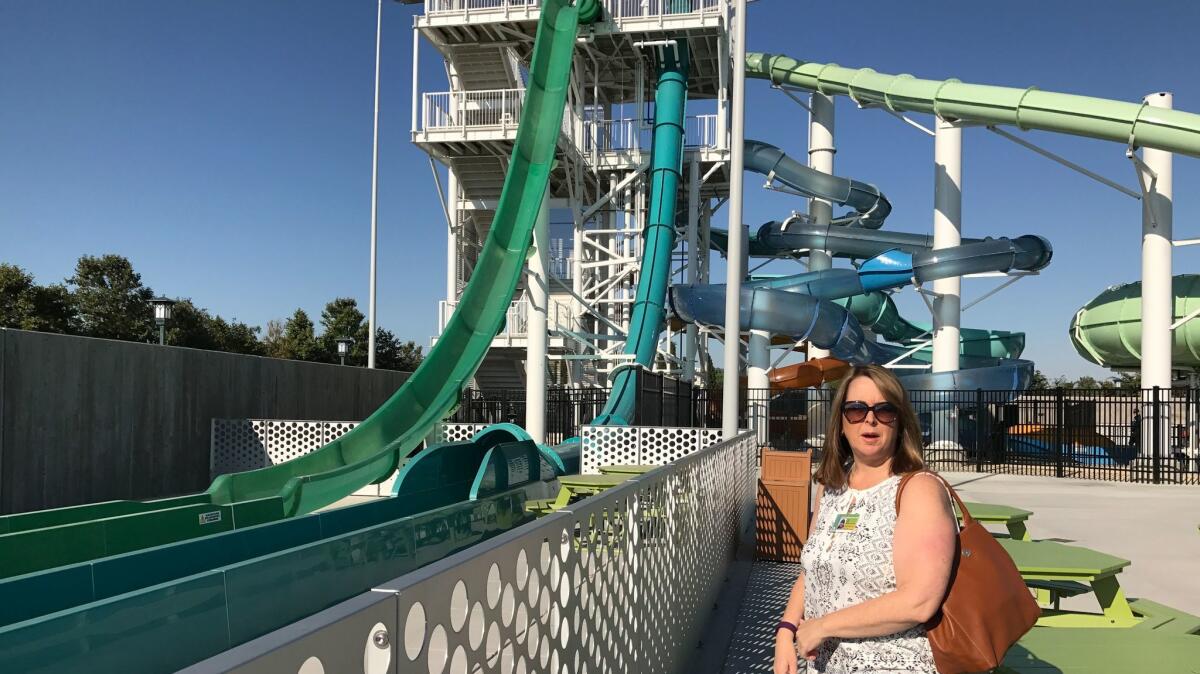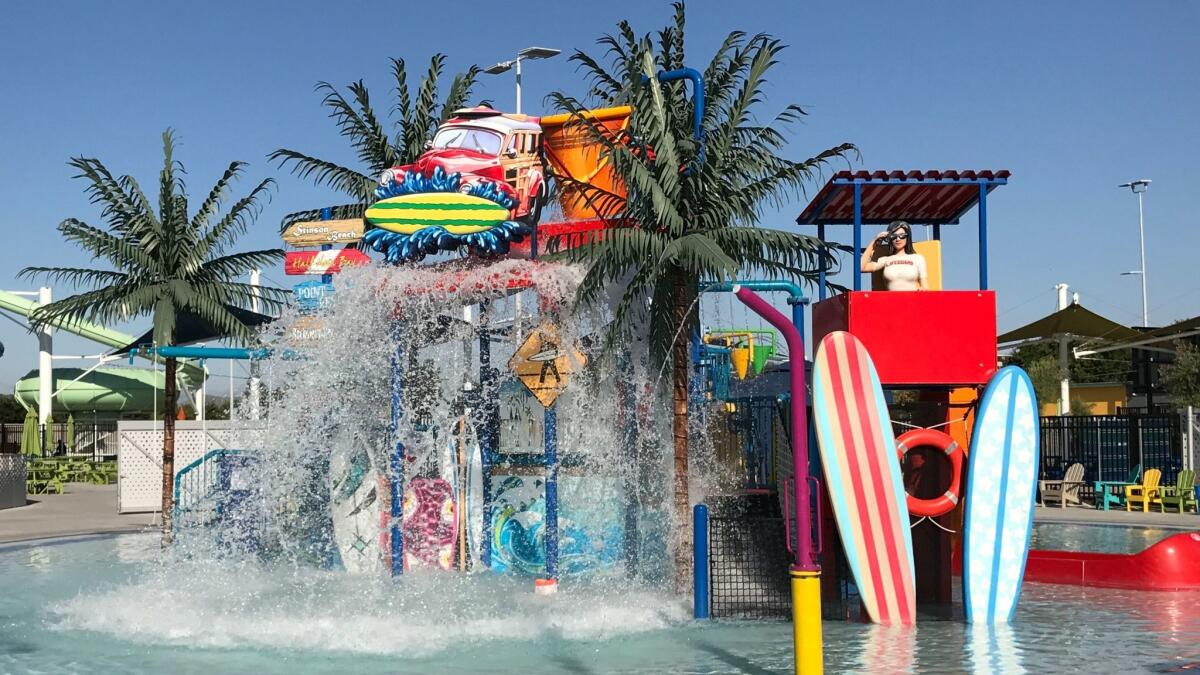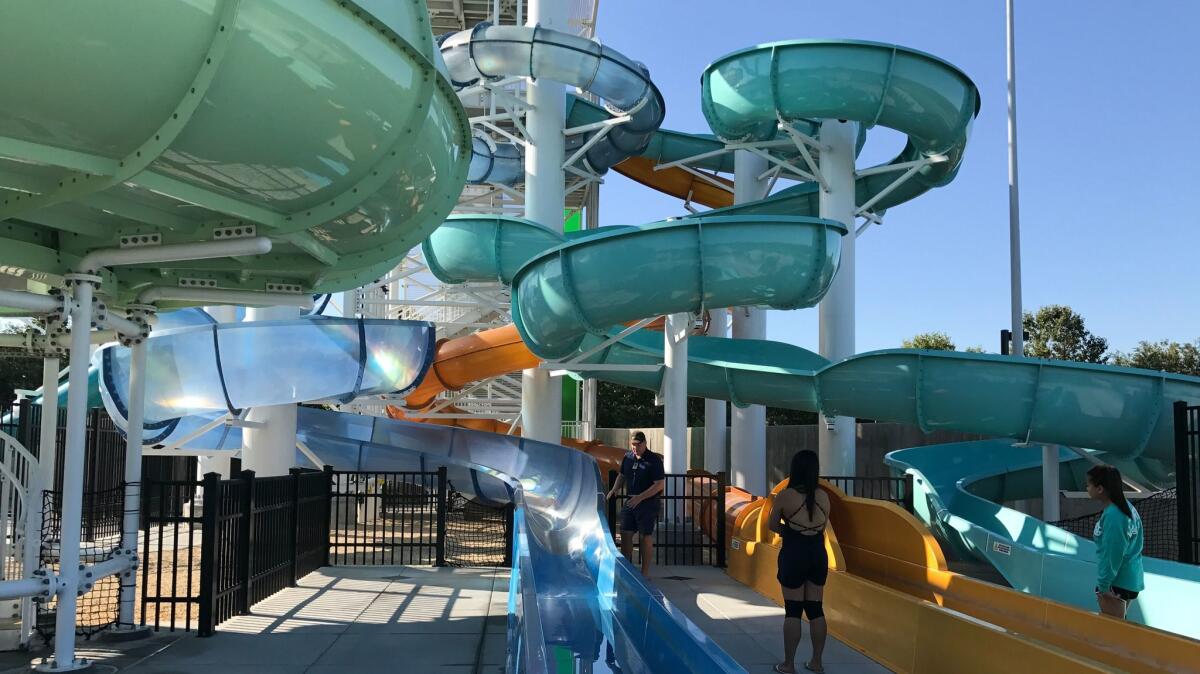California Journal: A Bay Area town, criticized for building a water park during a historic drought, did not back down

Chlorine. Itâs the smell of summer, and it hit me squarely in the nose when I walked into a new water park in Dublin, Calif., early Tuesday morning.
A few women did laps in the indoor pool, under a translucent roof. Outside, in another large pool, teenage swim team members practiced under the gaze of their slightly older coaches.
Next to the water slides, the park director was instructing three new hires â young women who will monitor the slides â on how to communicate using hand signals.
Two years ago, this San Francisco Bay Area bedroom community came under some unaccustomed criticism for its plans to build this park.
California was more than three years into a historic drought, and despite that, Dublin had decided to plunge ahead with construction on a water park with six water slides, a kiddie play area and two huge pools â indoor and outdoor â for exercise, lessons and competitions.
What the heck were Dublin officials thinking?

âMy talking point then was that we still have two winters to go before the park opens,â said Dublin Assistant City Manager Linda Smith as we toured the park Tuesday morning. âWe needed to just wait and see what happens.â
That answer was not acceptable to many Californians, who were having it drummed into their heads that water was too precious to waste on lawns or swimming pools or even showers.
This was, you will recall, a time of widespread shaming, of holier-than-thou water conservationists berating neighbors for refusing to take 20-second showers, for buying almonds, for washing their dusty cars.
Never mind that Dublin was a poster child for municipal conservation, that almost all of its parks were irrigated with recycled water, that its residents had surpassed drought conservation goals.
To many, building a water park during a drought just seemed tone deaf.
But money had been allocated, contracts had been signed. Construction of the Wave, as the park is called, rolled on.
Finally, on May 27, with the drought declared a plague of the past (at least for now), the Wave opened for business.
::
If youâre a thrill seeker, the water slides at the Wave probably wonât faze you.
You might enjoy, say, sailing down a three-story slide at an 80-degree angle, only to slow down and come to a stop when you hit a long, flat segment at the bottom.
Or you might find it exciting to come down a twisted, turning enclosed tube, hands crossed over your chest like a corpse, expelled into something that looks like a giant toilet bowl and whipped around inside a few times before coming to a stop and climbing out.
On opening day, Smith was standing next to the parksâ two steepest water slides â the Emerald Plunge and the Dublin Screamer â when she saw a 10-year-old boy shooting down the Emerald Plunge.
He made it just to the bottom when instead of stopping, he bounced out of the slide and over its edge, then skidded to a halt on the concrete. On videotape, the accident looked terrifying and painful.
âIt happened so quickly,â Smith said. âAnd then he popped up so quickly. There was not a lot of time to react. He was stunned and he got a little weepy.â
The boy was given first aid on site, then examined at a hospital and released, according to news reports. The park immediately shut down the Emerald Plunge and the slide next to it. They remain closed while a state investigation continues.
Despite the accident, attendance at the Wave went up the next day.
::
I always thought this water park was a great idea.
Dublin is a young city â only 35 years old â and one of the stateâs fastest growing.
Many of its 57,000 residents live in new neighborhoods, and many more developments are on the drawing board. In some ways, the town is a living rebuke to the idea that recalcitrant California cities are responsible for the stateâs widespread housing shortage.
Some major corporations have set up shop here (Chevron and Toyota, to name a couple), and the town appeals to tech industry workers willing to commute 35 miles or so to San Francisco and Silicon Valley in exchange for (slightly) lower housing costs and good public schools.

The townâs motto âThe New American Backyardâ pretty much encapsulates the Dublin aesthetic.
Dublin has won awards for water conservation; 90% of water used in its municipal operations is recycled. The water park requires about 480,000 gallons to fill â about as much water used by four or five California households a year â which doesnât seem like a whole lot to me.
City officials had been trying to build more public pool space since 2005, but the crash of 2008 forced them to put the recreational project on hold. The Wave got back on track in 2012. At that point, hundreds of children were on waiting lists for lessons and the public swim team.
Unfortunately for Dublin, by the time ground was broken on the water park in early 2015, the drought was at a crisis point.
In a case of bad timing, the city began construction at the very moment that Gov. Jerry Brown stood on a barren patch of ground where a deep snowpack should have been and declared a drought state of emergency.
I never thought the drought should stand in the way of a water park and pools. There are a million ways to save water without depriving children of a cool swim on a fiercely hot summer day, or seniors the chance to exercise in a warm pool in the dead of winter.
The opening day accident was a setback, for sure, and a sad reminder that risk-taking and injury sometimes go hand in hand.
And the world is full of danger, as I was reminded by the sound of gunfire in the distance as Smith and I stood chatting outside Dublinâs shiny aquatic center.
âOh, never mind the gunshots,â she told me. âthatâs just the sheriffâs shooting range. They also have an emergency detonation facility over there for bombs.â
Good to know.
Twitter: @AbcarianLAT
MORE FROM ROBIN ABCARIAN
They discover, they gentrify, they ruin: How âprogressâ is wrecking Los Angeles neighborhoods
How crazy do you have to be to run the worldâs most grueling foot race? (Hint: Not very)
When it comes to L.A. development projects, does anyone really care what the neighbors think?
More to Read
Sign up for Essential California
The most important California stories and recommendations in your inbox every morning.
You may occasionally receive promotional content from the Los Angeles Times.











